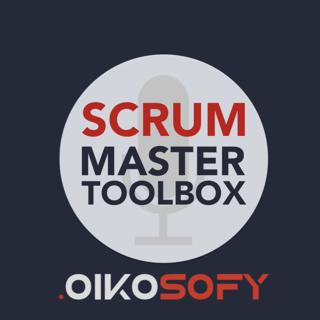
The Future of Agile Hardware Development, A Case Study From High Power Semiconductor Industry | Milad Maleki and Markus Thut
Jaksokuvaus
Agile in Hardware: The Future of Agile Hardware Development, A Case Study From High Power Semiconductor Industry With Milad Maleki and Markus Thut In this Agile in Hardware episode, Milad Maleki and Markus Thut of Hitachi Energy Ltd. describe the pioneering methods and challenges of Agile hardware development in high-power semiconductor manufacturing. From introducing cutting-edge RoadPak technology for Formula E racing to optimizing consumer EV solutions, they share a fresh perspective on agile practices beyond the traditional software domain. Join us as we uncover the intricacies of an iterative approach to hardware design, production integration, and actionable insights for advancing Agile principles in complex hardware manufacturing. The RoadPak Project: Pioneering eMobility Innovation Milad and Markus kick off the discussion with the story behind the RoadPak project, a powerful technology supporting electric mobility and racing industries, including Formula E and Formula 1. Developed initially as a small-scale prototype, RoadPak has since evolved into a versatile solution with wide-reaching applications in consumer electric vehicles and fast-charging stations. “From racing to consumer EVs, RoadPak's journey showcases the transformative potential of scaling innovation from concept to consumer solutions.” Redefining Agile in Hardware: An Iterative Revolution Unlike traditional hardware development’s linear approach, the team adopted an Agile model to adapt and evolve both the product and its manufacturing processes at the same time. By designing the production line in tandem with the product, they created a collaborative environment where feedback directly informed product design and production line adjustments. “In Agile hardware, the manufacturing process becomes part of the product itself—a continual feedback loop between design, production, and customer needs.” Iterative Sample Development: The A, B, C, and D Samples Milad and Markus discuss the use of progressive sample iterations (A, B, C, and D) to refine RoadPak’s development. But, within each of the sample phases, they iterated quickly, for example having samples from A1, A2, A2b, etc. This approach provided invaluable insights, allowing for cost-effective tools and small-scale prototypes that rapidly incorporated feedback from customers and the production line. “Every iteration helped us with fast and impactful learning cycles which refined both product design and manufacturing. Proving that fast feedback is crucial—even in hardware.” Customer Feedback and Early Prototyping: Shortening the Feedback Loop To ensure RoadPak met real-world requirements, the team engaged customers early and often. They relied on simulation, rapid prototyping, and laser-cut parts to accelerate the feedback process. A specialized “evaluation kit” enabled customers to test the component in their own environments, exemplifying how quick delivery - even in hardware projects - can significantly speed up product development. “Early customer feedback is critical; our evaluation kit bridged the gap, turning theoretical design into practical functionality for real-world testing.” Integrated Development: Product and Manufacturing as Partners This episode emphasizes the unique challenges of developing the product and manufacturing process concurrently. By focusing on early quality control and optimizing the process on-site, they achieved higher yield and product reliability, setting the foundation for scalable, high-quality production. “For any new product, designing the manufacturing process alongside the product itself isn’t optional—it’s essential for quick feedback, and long-term success and quality.” Key Success Factors in Agile Hardware Development Markus and Milad highlight the importance of cross-functional teams, communication, and focus on dedicated resources. By streamlining their team’s goals and processes, they maintained agility and clarity in the development cycle. This episode wraps up with tips and resources for those looking to apply Agile principles to hardware, emphasizing the value of flexible, collaborative workflows. “Focus and communication drive success in Agile hardware; with the right team alignment, you’re equipped to adapt quickly and effectively.” Recommended Resources Milad and Markus suggest practical resources to deepen listeners’ understanding of Agile in hardware. The book Scrum Essentials: Agile Software Development and Agile Project Management for Project Managers, Scrum Masters, Product Owners, and Stakeholders by Troy Dimes serves as an adaptable foundation. “Books and frameworks are starting points, but adapting Agile to hardware means integrating experimentation as a core part of the process.” About Markus Thut and Milad Maleki Markus Thut is a lead engineer at Hitachi Energy Ltd.’s semiconductor production in Lenzburg, Switzerland, specializing in high-power semiconductors and eMobility innovations. Markus is recognized for his forward-thinking approach to automation and industrial innovation, rooted in Swiss precision and a dedication to bringing visionary ideas to life. You can link with Markus Thut on LinkedIn and connect with Markus Thut on Twitter. Milad Maleki is the Head of R&D for high-power semiconductors at Hitachi Energy. With a PhD from École Polytechnique Fédérale de Lausanne (EPFL), Milad has led groundbreaking research and development initiatives in the semiconductor field, championing collaboration and innovation to power a sustainable energy future. You can link with Milad Maleki on LinkedIn and connect with Milad Maleki on Twitter.
